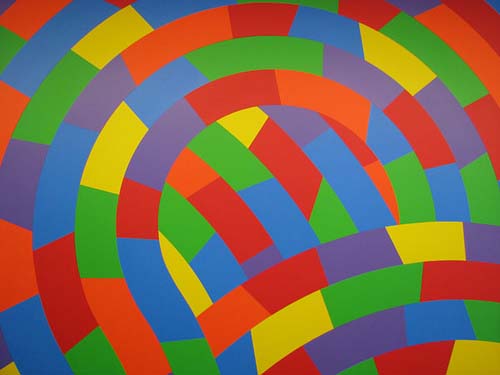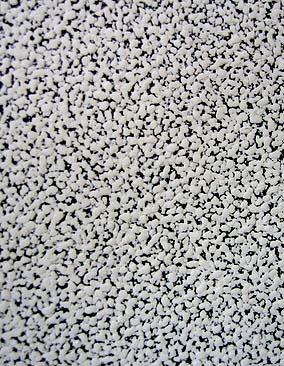 In the 1960s Sol LeWitt began creating artworks that explored the ways in which line, color, and images could be organized and expressed through what Lewitt’s close friend, the artist Mel Bochner, described as “The Serial Attitude.” As such, LeWitt became one of the leading exponents of Minimalism and Conceptual art, engaging painting, drawing, photography, language, performance, printmaking, sculpture, and eventually wall drawings through his well thought-out philosophy. In writing for Artforum in 1967, he proposed: “In conceptual art the idea or concept is the most important aspect of the work. When an artist uses a conceptual form of art, it means that all of the planning and decisions are made beforehand and the execution is a perfunctory affair. The idea becomes the machine that makes the art. This kind of art is not theoretical or illustrative of theories, it is intuitive. It is involved with all types of mental processes and it is purposeless . . . There is no reason to suppose, however, that the conceptual artist is out to bore the viewer.”
In the 1960s Sol LeWitt began creating artworks that explored the ways in which line, color, and images could be organized and expressed through what Lewitt’s close friend, the artist Mel Bochner, described as “The Serial Attitude.” As such, LeWitt became one of the leading exponents of Minimalism and Conceptual art, engaging painting, drawing, photography, language, performance, printmaking, sculpture, and eventually wall drawings through his well thought-out philosophy. In writing for Artforum in 1967, he proposed: “In conceptual art the idea or concept is the most important aspect of the work. When an artist uses a conceptual form of art, it means that all of the planning and decisions are made beforehand and the execution is a perfunctory affair. The idea becomes the machine that makes the art. This kind of art is not theoretical or illustrative of theories, it is intuitive. It is involved with all types of mental processes and it is purposeless . . . There is no reason to suppose, however, that the conceptual artist is out to bore the viewer.”
 In 1968, LeWitt made his first wall drawing, which consisted of thousands of graphite pencil lines organized in systematized arrangements of verticals, horizontals, and diagonals drawn directly on gallery walls. Over the next forty years, LeWitt’s oeuvre grew to comprise 1,254 wall drawings. In their entirety, they richly explore many ways of using lines and geometric forms, free-form shapes, countless color combinations, numerous materials, and a variety of architectural sites across the globe. Throughout this time, LeWitt’s wall drawings have been executed by a legion of trained assistants, artists, and students, hundreds of whom have learned how to execute his work according to the artist’s specific diagrams and directions.
In 1968, LeWitt made his first wall drawing, which consisted of thousands of graphite pencil lines organized in systematized arrangements of verticals, horizontals, and diagonals drawn directly on gallery walls. Over the next forty years, LeWitt’s oeuvre grew to comprise 1,254 wall drawings. In their entirety, they richly explore many ways of using lines and geometric forms, free-form shapes, countless color combinations, numerous materials, and a variety of architectural sites across the globe. Throughout this time, LeWitt’s wall drawings have been executed by a legion of trained assistants, artists, and students, hundreds of whom have learned how to execute his work according to the artist’s specific diagrams and directions.
Writing in The New York Times in 2007, Michael Kimmelman said of LeWitt, “A patron and friend of colleagues young and old, he was the opposite of the artist as celebrity. He tried to suppress all interest in him as opposed to his work; he turned down awards and was camera-shy and reluctant to grant interviews . . . With his wall drawing, mural-sized works that sometimes took teams of people weeks to execute . . . he always gave his team wiggle room, believing that the input of others—their joy, boredom, frustration or whatever—remained part of the art.” And in a profile in The New Yorker, Peter Schjeldahl wrote, “It isn’t just the physical scale of a museum wall that LeWitt’s elegantly adaptable art matches, but the social and spiritual scale of our relations with museums themselves.”



